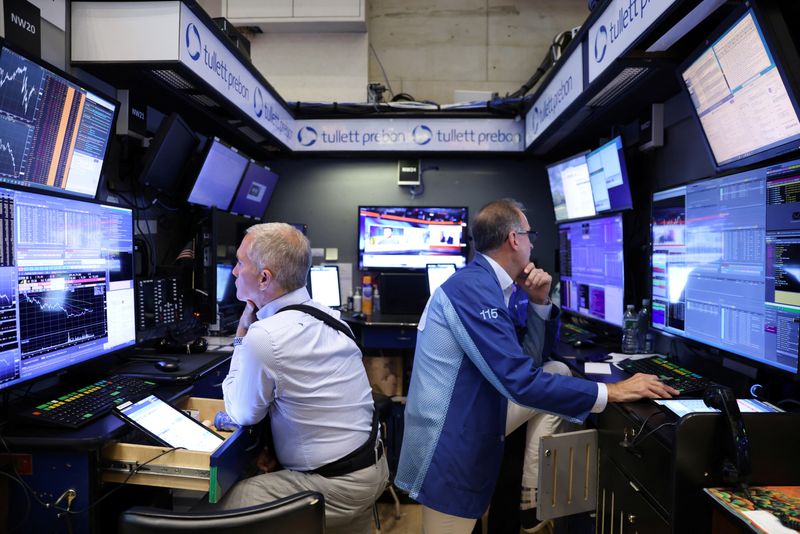By David French
(Reuters) - Wall Street ended Tuesday lower as the eve of a U.S. Federal Reserve meeting expected to bring another large interest rate hike brought further evidence of the impact on corporate America from the inflation that the U.S. central bank wants to tame.
The benchmark S&P 500 index has dropped 19.1% so far this year as investors fear aggressive policy tightening measures by the Fed could tip the U.S. economy into a recession.
It closed for the third straight session below 3,900 points - a level considered by technical analysts as a strong support for the index - as last week's dire outlook from delivery firm FedEx Corp (NYSE:FDX) was repeated, this time by automaker Ford Motor (NYSE:F) Co.
Shares of Ford slumped 12.3%, the biggest one-day drop since 2011, after it flagged a bigger-than-expected $1 billion hit from inflation and pushed delivery of some vehicles to the fourth quarter due to parts shortages.
Rival General Motors Co (NYSE:GM) also sank 5.6%.
"We have seen some bellwethers talk about the pressures they are facing, so we could see some margin compression and some softening in the topline numbers in the third-quarter earnings," said Greg Boutle, head of U.S. equity & derivative strategy at BNP Paribas (OTC:BNPQY).
The U.S. central bank is widely expected to hike rates by 75 basis points for the third straight time at the end of its policy meeting on Wednesday, with markets also pricing in a 17% chance of a 100 bps increase and predicting the terminal rate at 4.49% by March 2023.
Focus will also be on the updated economic projections and dot plot estimates for cues on policymakers' sense of the endpoint for rates and the outlooks for unemployment, inflation and economic growth.
Adding to the mix, a Commerce Department report showed residential building permits - among the more forward-looking housing indicators - slid by 10% to 1.517 million units, the lowest level since June 2020.
The benchmark U.S. 10-year Treasury yield hit 3.56%, its highest level since April 2011, while the closely watched yield curve between two-year and 10-year notes inverted further. [US/]
An inversion in this part of the yield curve is viewed as a reliable indicator that a recession will follow in one to two years.
"There are a lot of headwinds to prevent sustained rallies. It's hard to have (price-to-earnings) expansion while the Fed is tightening," said BNP's Boutle.
The Dow Jones Industrial Average fell 313.45 points, or 1.01%, to 30,706.23, the S&P 500 lost 43.96 points, or 1.13%, to 3,855.93 and the Nasdaq Composite dropped 109.97 points, or 0.95%, to 11,425.05.
All of the 11 major S&P sectors declined, with economy-sensitive real estate and materials sectors the biggest fallers, dropping 2.6% and 1.9% respectively.
Meanwhile, in another sign of nerves around future corporate earnings, Nike Inc (NYSE:NKE) fell 4.5% after the sportswear giant was downgraded by Barclays (LON:BARC) analysts to "equal weight" from "overweight", citing volatility in the Chinese market due to pressures from COVID-related lockdowns in early September.
Another apparel maker, Gap Inc (NYSE:GPS), closed 3.3% lower. It announced on Tuesday it was eliminating about 500 corporate jobs, having withdrawn its annual forecasts late last month due to an inventory glut and weak sales.

Volume on U.S. exchanges was 9.90 billion shares, compared with the 10.71 billion average for the full session over the last 20 trading days.
The S&P 500 posted two new 52-week highs and 66 new lows; the Nasdaq Composite recorded 31 new highs and 408 new lows.
